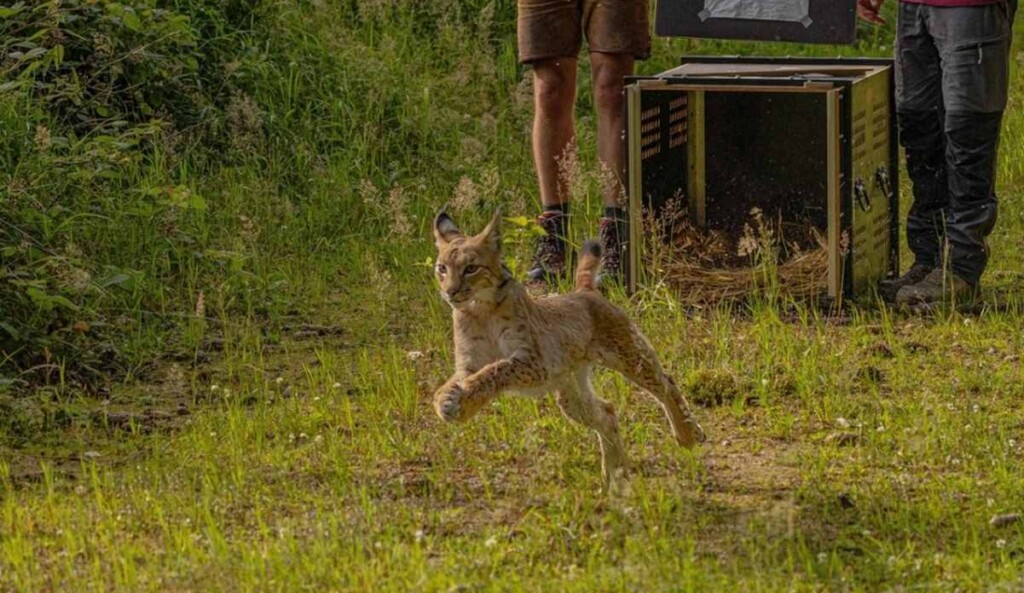 credit – Archive Naturschutz LfULG R. Oehme, released
credit – Archive Naturschutz LfULG R. Oehme, releasedDespite being brought up in the Nuremberg Zoo a young Carpathian lynx named Chapo was born to be wild.
Respecting his wishes, the German zookeepers abandoned their intention to raise him to eventually contribute his genes to a vital captive breeding program and release him into the wilds of Germany.
Now residing in the forests of Saxony, he joins a steadily growing population of wild lynx across Germany and Switzerland that are slinking back across the acreage they prowled long ago.
The Carpathian lynx is a subspecies of the Eurasian lynx, which while being listed as endangered on the IUCN Red List, is nevertheless extinct across large swaths of its former habitat.
A further subspecies, the Iberian lynx, is thriving and growing across Portugal and Spain after 2 decades of heroic, intense conservation work. In Germany however, there are only 190 lynx roaming mainly in the Harz Mountains, and the Bavaria and Rhineland-Palatinate.
Chapo was one year old, when, as a captive-born cat, he was taken to a breeding facility in the Harz Mountains. The first thing he did, despite growing up in a zoo, was to leap over the enclosure fence.
He was quickly caught but his wanderlust was evident, the Sunday Times reports.
“He kept looking for ways out of the enclosure and found it difficult to settle down,” Saxony’s wildlife authority said in a statement. “This showed that the young lynx was better suited to being released into the wild.”
According to the Times, experts from the Linking Lynx network had identified Chapo as shy and suitable for reintroduction while he was at Nuremberg, leading keepers to maintain minimal contact with him, feed him only game meat, and place him in the largest enclosure.
YOU MAY ALSO LIKE: Camera Catches Sighting of a Tiger with Cubs for First Time in 10 Years, Raising Hopes for Species in Thailand
Two weeks ago, he bounded out of his crate, stopped to sniff the wind and catch his bearings, then disappeared into the forest—GPS collar firmly latched about his neck.
MORE WILDCAT NEWS: Rare Species of Feline Dubbed the ‘Original Grumpy Cat’ Found Living On Mount Everest
He joins three other lynx to be reintroduced this year, all of whom have “graduated” from hunting rabbits, to hunting foxes, to hunting deer. Despite being the third largest land predator in Europe, the lynx is seldom seen and poses no threat to livestock.
Recently, the Saxon government detailed that Nova and Luna were recorded as being only a hundred meters or so apart, and “it cannot be ruled out that they met.”
SHARE The Dream Of This Little Lynx Finally Fulfilled…
Source link

